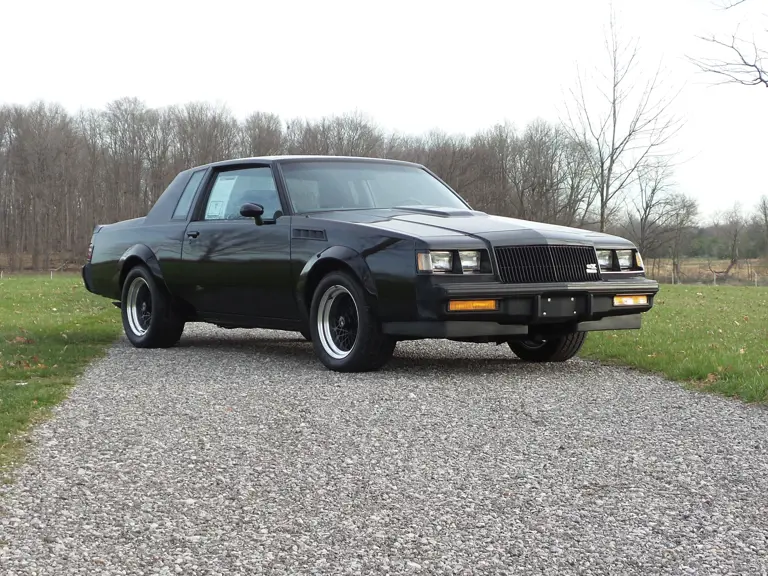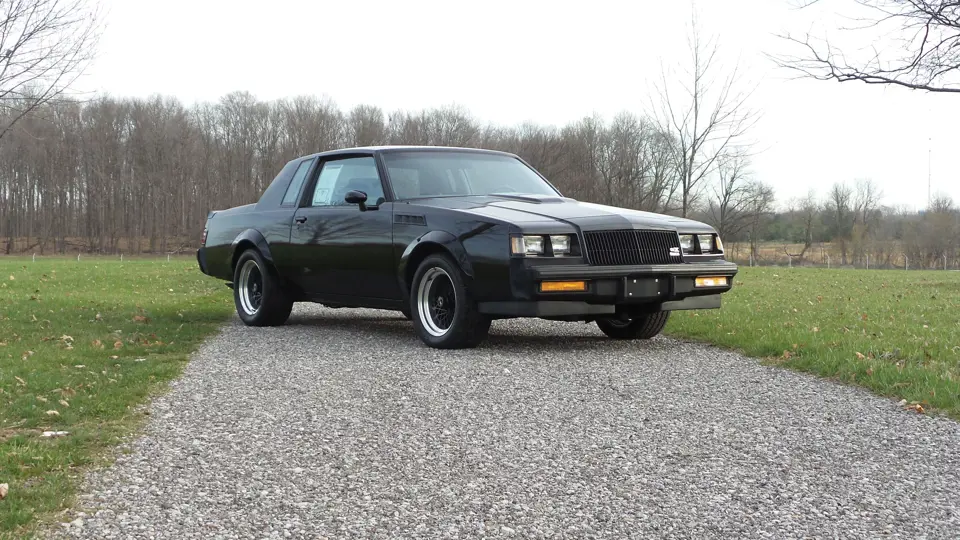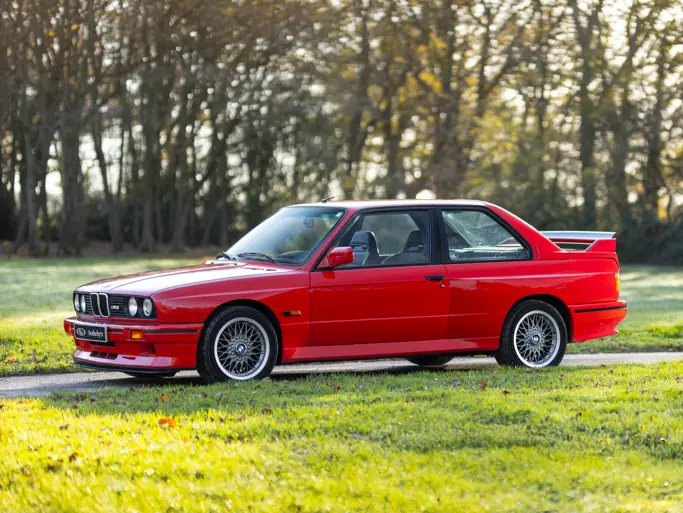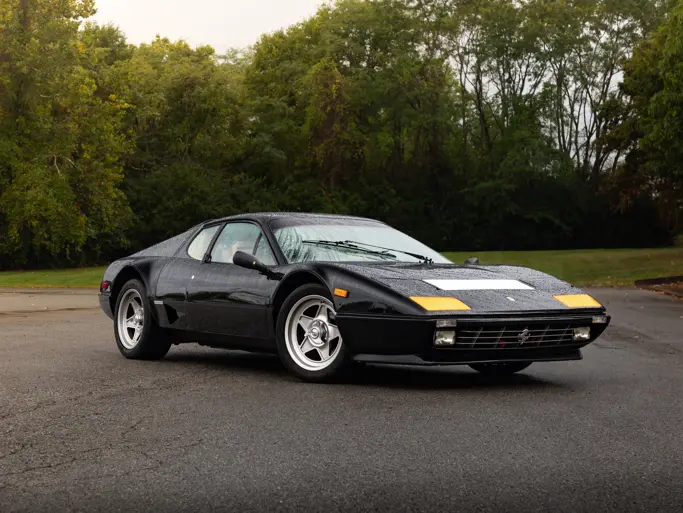 | Auburn, Indiana
| Auburn, Indiana
For performance enthusiasts, the 1980s did not begin on a promising note. Auto manufacturers were submerged in a deluge of government regulations covering safety, fuel economy and exhaust emissions; performance cars received little thought and even less effort.
Nevertheless, Buick managed to add to its long performance history with the Regal Grand National. Based on a front engine, rear drive Regal/Malibu platform, the company made an attempt to meet the demands from speed-starved enthusiasts with its turbocharged V-6. Since American big-block V-8s were largely extinct by the mid-1970s, Buick engineers experimented with turbocharging the 231 cubic inch V-6, and their first high-profile effort, a 307-hp Century in 1976, was the first V-6-powered Indianapolis 500 pace car.
The chiseled lines of the new-for-1978 Regal helped Buick take the NASCAR manufacturer’s title for 1981 and 1982, and to celebrate, the first Grand National Regal appeared in 1982, in naturally aspirated and turbocharged form. The option returned in 1984, now only with a turbocharged V-6 engine, an all-black exterior, aluminum wheels, special seats, high-performance underpinnings and unique badges.
This steady development and the addition of an intercooler on the factory production vehicle raised output to 245-hp by 1986, creating America’s quickest production car. So much so, it also inspired a limited run of turbo Regals for FBI use. The Grand National, so named for its acclaimed connection to the NASCAR racing series, offered a turbo at a time when most Americans were accustomed to seeing such technology in upmarket models like the Porsche 930. Out of the approximate 10,000 Grand Nationals produced, only 547 GNX versions were to be built. The 1987s were the last rear-wheel drive turbos to be produced by Buick and proved to be so popular that production lines stayed open through December, long after the switch to the 1988 cars was due.
The building of the GNX occurred midway through the Grand National’s production run; Buick authorized this limited run of 547 specials that had this three-letter designation. To help promote this limited availability Buick; the company ran enthusiast magazine ads that asserted the GNX as “A high-performance investment for the Fortunate 500.” The idea was that the new GNX would combine the basic performance platforms with the latest electronics and turbocharging to create the ultimate modern musclecar and quickest GM production car in history. These performance enhancements, coupled with the standard Regal luxury power options created an instant classic.
Built by ASC/McLaren; the builders of the 24-valve Buick turbo V-6 engines for select teams at the Indianapolis 500, the GNX used a high-performance Garrett turbo with a ceramic impeller, improved intercooler, revised engine management calibration, high performance transmission valving and free-flow exhaust on the 3.8-liter V-6. Output was boosted to over 275-hp, and torque was rated at 360-lb/ft. Larger tires, special black laced-type alloy wheels, a rear axle torque arm and Panhard bar, plus added frame stiffening were standard fare for the beefed-up GNX package. Front fender vents helped engine cooling, while an analog gauge instrument panel and logo array completed the package, which already included a full load of factory options.
Among the above mentioned factory luxury gear are an automatic transmission, two-tone cloth bucket seats with headrest logos, center console, air conditioning, AM/FM radio with cassette, tilt steering wheel, cruise control, dual remote sport mirrors, Goodyear Eagle VR 50 tires: power driver’s seat, windows, door locks, steering and brakes.
This 1987 Buick GNX is # 496 of 547 built. It is all original and has never been modified and currently is showing the astoundingly low figure of 119 miles on the odometer, which is listed as actual. It presents as nicely as one would expect and has always been stored indoors. It includes the original window sticker still on the car, GNX coffee table book #496, dealer plastic on floor areas, original books, original keys, original floor mats, GNX factory brochure and a predictably clean Carfax.
In period, Grand Nationals were the kings of the dragstrip and proved there was a replacement for pure cubic inches of displacement. And they're still exhilarating to drive. Turbocharged Buicks went on to pace the Indy 500 and had a best finish of third in 1992 with Al Unser following Al Unser Jr. and Scott Goodyear home in the closest finish in Speedway Indy Car history. Turbo V-6-powered cars sat on the pole for the “Greatest Spectacle in Racing” in 1985, 1992, 1995 and 1996. The last two of these were with the Buick rebadged as a Menard (the team’s owner). The Grand National and its many variations boast a fervent owner group who stick together and really enjoy their cars -- it's easy to understand why.





